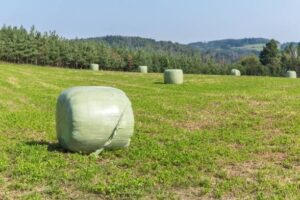In the vast expanse of Australia’s agricultural heartland, where golden fields stretch as far as the eye can see, there’s a silent hero that plays a pivotal role in the success of farming operations:
baler twine. This unassuming yet indispensable tool serves as the backbone of agricultural productivity, ensuring that hay, straw, and other crops are efficiently bundled and transported. In this article, we delve into the significance of baler twine in Australia’s agricultural sector, exploring its uses, benefits, and the factors that contribute to its importance. For more information about the baler twine manufacturer, click here.
Understanding Baler Twine: A Crucial Component of Farming Machinery
 Baler twine, also known as baling twine or hay bale twine, is a robust and durable cord used to bind together bales of agricultural products, primarily hay and straw. Made from materials such as polypropylene, sisal, or a combination of both, baler twine is engineered to withstand the rigours of agricultural work, such as exposure to harsh weather conditions and heavy loads.
Baler twine, also known as baling twine or hay bale twine, is a robust and durable cord used to bind together bales of agricultural products, primarily hay and straw. Made from materials such as polypropylene, sisal, or a combination of both, baler twine is engineered to withstand the rigours of agricultural work, such as exposure to harsh weather conditions and heavy loads.
The Key Role of Baler Twine in Australian Agriculture
Australia’s agricultural sector relies heavily on baler twine for the efficient harvesting, baling, and storage of crops. With the country’s vast expanses of farmland and diverse climatic conditions, farmers depend on baler twine to streamline their operations and maximise productivity. For more information about the baler twine manufacturer, click here.
Here are some key ways in which baler twine contributes to the success of Australian agriculture:
- Baling Efficiency: Baler twine enables farmers to quickly and securely bind harvested crops into compact bales, facilitating efficient handling and transportation. This efficiency is especially crucial during busy harvest seasons when time is of the essence.
- Crop Protection: Properly secured bales help protect harvested crops from moisture, pests, and other environmental factors that can compromise their quality. Baler twine plays a vital role in ensuring that bales remain intact and protected until they reach their destination.
- Cost-Effective Solution: Compared to alternative methods of baling, such as wire or twine made from natural fibres, modern synthetic baler twine offers a cost-effective solution that delivers reliable performance and durability.
- Versatility: Baler twine is not limited to baling hay and straw. It is also used in a variety of other agricultural applications, including securing fencing, trellising crops, and even as makeshift repairs around the farm.
Factors Driving the Demand for Baler Twine in Australia
Different factors contribute to the sustained demand for baler twine in the Australian agricultural sector:
- Expansion of Agricultural Land: As agricultural land in Australia continues to expand to meet the growing demand for food and fibre, the need for efficient baling solutions becomes increasingly critical. Baler twine enables farmers to optimise their harvesting and baling processes, supporting the scalability of agricultural operations. For more information about the baler twine manufacturer, click here.
- Technological Advancements: Advancements in agricultural machinery and equipment have led to increased efficiency and productivity on farms. Baler twine manufacturers have responded by developing innovative products that meet the evolving needs of modern farming practices, further driving the adoption of baler twine in Australia.
- Environmental Considerations: With increasing awareness of environmental sustainability, there is a growing preference for eco-friendly baling materials. Many manufacturers now offer baler twine made from recyclable materials, providing farmers with a sustainable alternative that aligns with their environmental values.
Balancing Sustainability and Performance: The Evolution of Baler Twine in Australian Agriculture
As Australia’s agricultural landscape embraces sustainability, the role of baler twine transforms. Manufacturers are innovating with eco-friendly materials, meeting the demands of environmentally-conscious farmers. From biodegradable options to twine made from recycled plastics, these advancements align with the industry’s shift towards greener practices. However, sustainability doesn’t compromise performance; modern baler twine maintains its strength and durability, ensuring efficient baling and transportation of crops.
Conclusion
In the dynamic landscape of Australian agriculture, where innovation and efficiency are paramount, baler twine stands out as a humble yet indispensable tool. From the vast wheat fields of Western Australia to the rolling hills of Tasmania, farmers rely on baler twine to harvest, bale, and transport their crops with precision and reliability. As the agricultural sector continues to grow, the importance of baler twine in supporting the nation’s food and fibre production will only grow, cementing its status as a fundamental component of Australian farming practices.